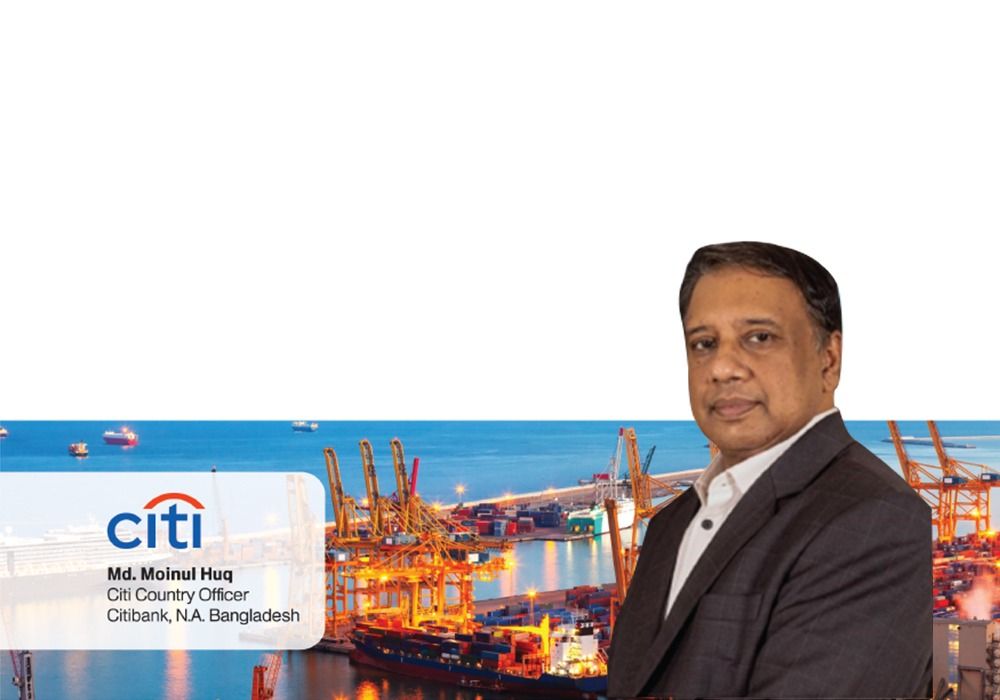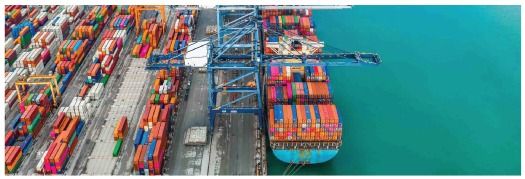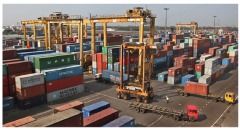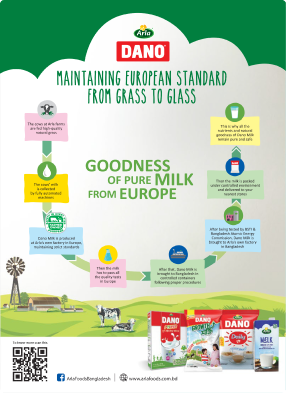- info@ficci.org.bd
- |
- +880248814801, +880248814802
- Contact Us
- |
- Become a Member
- |
- |
- |
- |
- |

Sea ports play an instrumental role in international trade and economic growth as almost 80% of global trade by volume and 70% by value is transported via sea routes. It also works as key catalyst for the growth of blue economy, enhancing connectivity, strengthening national security & resilience along with ensuring long-term competitiveness in an interconnected world. Chattogram Port being Bangladesh's main seaport, handles over 90% of the nation's trade and about 98% of container trade. Its strategic location along the Bay of Bengal makes it a vital player in global supply chains and has been used by India, Nepal and Bhutan for transshipment.
Logistic Dynamics in Bangladesh
According to the World Bank, logistics costs in Bangladesh range from 4.5% to 48%, which is significantly higher compared to peer countries. National export earnings could increase by 19% with short and medium-term reforms in the logistics sector. 1% reduction in logistics costs could boost the demand for Bangladeshi exports by up to 7.4%.
Chattogram Port: Current Capacity and Key Performance Indicators
The port handled 3.26 mn TEUS (twenty-foot equivalent units) of containers in 2024, which is 6.8% higher than 3.05 mn TEUS in 2023. The port is ranked 337th out of 405 in the World Bank's Container Port Performance Index 2023. Average RMG supply lead time is higher in Bangladesh (95 days) compared to Vietnam (60 days) and China (32.5 days).

Chattogram Port: Future Version at a Glance
• Growing Trade Volume: As per Chattogram Port Authority projections, the port needs to be able to handle 8.6 mn TEUS annually by 2035 and 11.5 mn TEUS by 2040.
• Infrastructure Upgrades: Future capacity must include facilities for handling Panamax and post-Panamax ships, requiring deeper drafts and longer berths.
• Port Access and Cargo Handling: Improving transportation links and digitizing systems to improve turnaround time and reduce delays.
Digitization of Ecosystem and Regulatory Reforms
Bangladesh Single Window (BSW) aims to streamline trade operations by ultimately combining the activities of 19 agencies related to customs under one system. The window will streamline procedures for international trade-related permits, licenses, certificates, and customs declarations and expected to reduce paperwork, time, and costs.
Infrastructure & FDI: Now and Beyond
Patenga Container Terminal (PCT): The First Foreign-Operated Terminal at Chattogram Port.
 • It is expected to reduce container congestion at the port by integrating import handling alongside export and empty container management.
• It is expected to reduce container congestion at the port by integrating import handling alongside export and empty container management.
• The PCT built with BDT 12.30 bn (USD 100.8 mn) from Chittagong Port Authority (CPA)'s own fund. In December 2023, the port authority signed a 22-year contract with Red Sea Gateway, which is looking to increase container handling capacity from 250,000 TEUS to 600,000 TEUS.
Chattogram Port Access Road Improvement Project
The project of ADB will improve the Chattogram Port Access Road, a 11.5-kilometer road linking Dhaka- Chattogram highway and the Port, by increasing lanes and adding a service road.
Bay Terminal Marine Infrastructure Development Project (BTMIDP):
• The project will double the handling capacity of the port and significantly reduce congestion in the city. Estimated project cost is BDT 149.1 bn (USD 1.22 bn). Completion is expected between 2029 and 2030.
• The Bay Terminal will be able to accommodate vessels with a depth of 12 meters and 280 meters in length from existing capacity of 10 meters in depth and 200 meters in length.
• The project will allow to berth ships with a carrying capacity of up to 6,000 containers up from present capacity of around 2,000 containers.
 International Port Handlers
International Port Handlers
DP World and AP Moller-Maersk, two major port handlers in the world, have expressed their interest in making big investments in Bangladesh's shipping industries to help the country build new ports along the coast of the Bay of Bengal and become a major global export hub.
Matarbari Deep Sea Port
• The project to transform the Matarbari port into a deep-sea port is estimated to be completed by 2029. The estimated cost is USD 2 bn (BDT 243.81 bn), with JICA extending USD 1.06 bn (Tk 128.93 billion), while the government and the Port Authority will cover the rest.
• The multipurpose terminal's expected capacity to cater to large cargo vessels, capable of transporting 80,000 to 100,000 metric tons of goods, marks a considerable improvement from the current limit of only 20,000-30,000 metric tons.
• Matarbari Deep Seaport also envisions handling 1.4 to 4.2 million TEU containers by 2041.
• The new port indicates a heightened route efficiency, establishing a direct trade pathway to Europe and the US reducing durations from Bangladesh to the US from 45 days to just 23 days. Insights from the Chattogram Port Authority also suggest that constructing a deeper port capable of accommodating larger vessels could potentially slash transportation costs by 15%.





